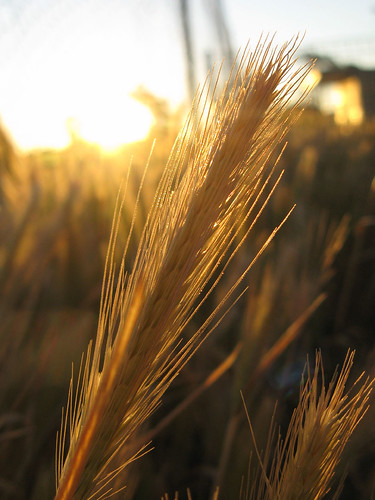Despite the heavily advertised benefits of specific nutrients that were recognized as healthful in clinical studies and isolated for mass production, noone ever tells us that these fancy products (bursting with ingredients that supposedly fight cancer, heart disease, aging process and more) - are still dead, processed foods, fortified with (most likely) synthetic vitamins and minerals and other artificial additives and preservatives - some of them harmful: hydrogenated oils, preservatives, neurotoxins.
The most natural way of dieting would be consuming plants and foods in their whole form - for bodies well-nourished, minds balanced and immune systems hearty.
Infusions made of nourishing herbs (lemon balm, nettles, oat straw, raspberry leaf) are an easy way to add extra nutrients to your diet - and preventive.
The following is an article about herbal infusions that I really like and a summary of quantities used for infusions made of different parts of plants - both by the same herbalist author:
Nourishing Herbal Infusions
An infusion is a large amount of herb brewed for a long time. Typically, one ounce by weight (about a cup by volume) of dried herb is placed in a quart jar which is then filled to the top with boiling water, tightly lidded and allowed to steep for 4-10 hours. After straining, a cup or more is consumed, and the remainder chilled to slow spoilage. Drinking 2-4 cups a day is usual. Since the minerals and other phytochemicals in nourishing herbs are made more accessible by drying, dried herbs are considered best for infusions.
I make my infusions at night before I go to bed and they are ready in the morning. I put my herb in my jar and my water in the pot, and the pot on the fire, then brush my teeth (or sweep the floor) until the kettle whistles. I pour the boiling water up to the rim of the jar, screw on a tight lid, turn off the stove and the light, and go to bed. In the morning, I strain the plant material out, squeezing it well, and drink the liquid. I prefer it iced, unless the morning is frosty. I drink the quart of infusion within 36 hours or until it spoils. Then I use it to water my house plants, or pour it over my hair after washing as a final rinse which can be left on.
My favorite herbs for infusion are nettle, oatstraw, red clover, and comfrey leaf, but only one at a time. The tannins in red clover and comfrey make me pucker my lips, so I add a little mint, or bergamot, when I infuse them, just enough to flavor the brew slightly. A little salt in your infusion may make it taste better than honey will.

Photo herbs steeping - courtesy of hit_the_snow
***
| |||||||
| Plant Part --------------- Roots/barks Leaves Flowers Seeds/berries | Amount ----------- 1 oz/30 g. 1 oz/30 g. 1 oz/30 g. 1 oz/30 g. | Jar/Water ------------ pint/500 ml quart/liter quart/liter pint/500 ml | Length of Infusion ------------------ 8 hours minimum 4 hours minimum 2 hours minimum 30 min. minimum | ||||
***


9 comments:
This was very interesting. Things I always wondered but didn't know before. Thanks for sharing!
Do you feel so much better? I am wondering if I need to start implementing these things.
Oh thanks for that, very interesting
It's so hard to get plants in natural form these days unless you grow them yourself. Great information - I'm definitely going to be on the lookout for better ingredients in what I buy.
The chart is very helpful! I would never have guessed at say how long bark needs to infuse (if that's a word). Great info!
That was really great information. The more we can do for ourselves the better when it comes to bumping up our immune systems to fight the toxins. I've done a little, but nothing like what you've laid out here. I've done dandelion and ginger (not together!)
I have to agree. This is a lot of great information. I love when I learn something new :)
The word 'infusion' is so wonderful.
My Mom used to make herbal remedies/teas in the 1950's - steeping the leaves or barks - after all it was NOT easy to get to the store - and we appreciated her remedies!
Thanks for all the information Daria :)
I also think some rosemary helps with the cold and stress. I am really loving my rosemary bath oil right now :)
Post a Comment